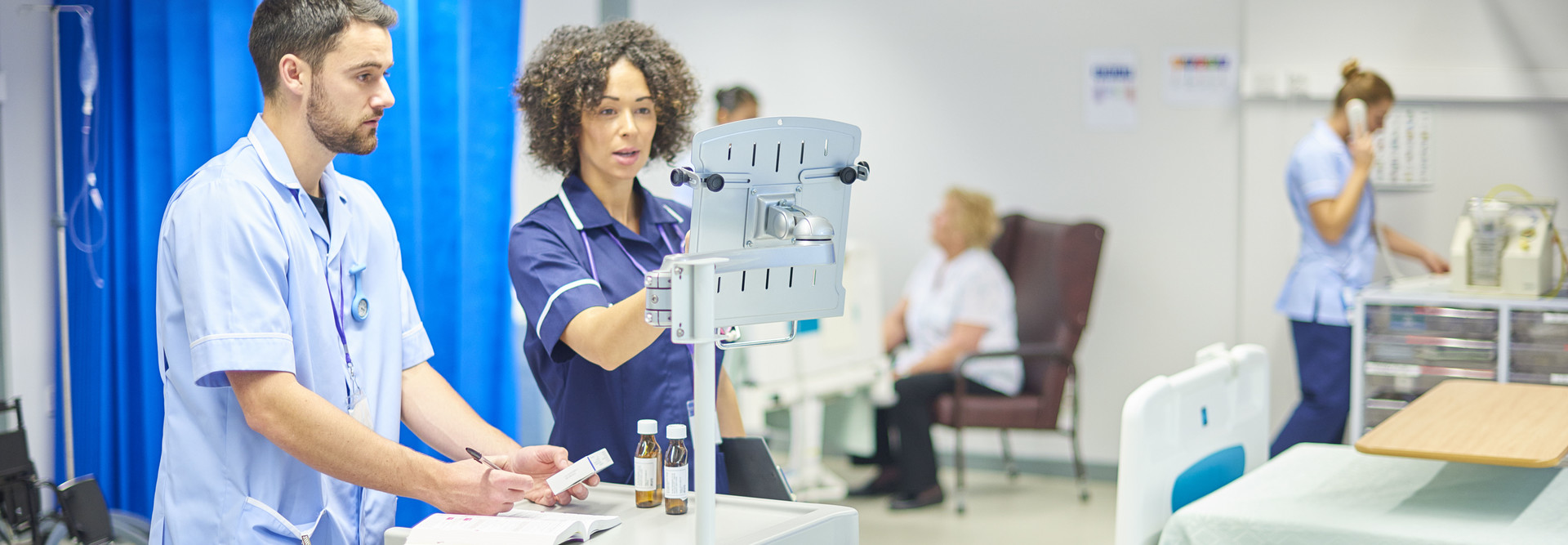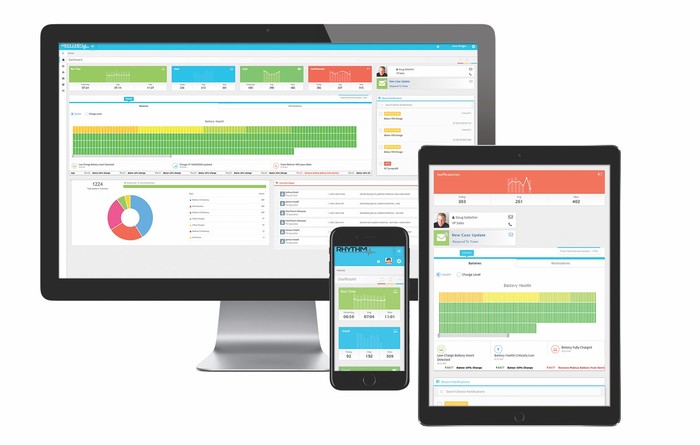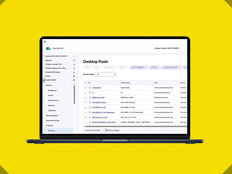When paired with Enovate's Rhythm, mobile EHR workstations can be remotely monitored and managed in real time. (Enovate Medical)
3. Convenient Placement Leads to Real Time Documentation
Though not able to travel from room to room, MedStar Montgomery Medical Center’s option for articulating wall-arm workstations offers its clinical staff a full range of motion while maintaining visual contact with their patient. The healthcare provider chose this compact, flexible station based on its nurses’ needs and the physical building’s recent renovations.
“This was one of the keys to their success — we conducted a thorough and comprehensive assessment and made recommendations to improve bedside documentation and maximize workflow,” says Kerstin Haase, Enovate’s regional sales director from the northeast region.
Their results: more patient engagement in high-acuity patient rooms and the ability to monitor patients easily in real time.
READ MORE: Learn how electronic health records can improve patient care.
4. Mobile Stations Allow for More Face-to-Face Time with Patients
Battery life is always a concern for mobile EHR workstations — constantly assessing, swapping and replacing batteries can mean less time with patients. That’s why Montrose Memorial Hospital, a community hospital on the western slope of Colorado, opted to lease Enovate’s MobiusPower, bringing a flexible, efficient swappable battery system to its mobile EHR workstations. The batteries only need to be swapped out once in a 12-hour shift, and that process only takes seconds.
“With this refresh, our call volume on battery and cart issues has dropped significantly,” says John Zentmeyer, technical support analyst II at Montrose Memorial.
The hospital’s nurses can now spend less time with tech logistics and worrying about battery life and instead focus on what they do best — helping patients.
“The ability to roll a workstation up into a triage room and be able to document with the patient in real time is big,” says Eric Herd, director of information services. “In the emergency department, we enhanced workflow quite a bit just by helping them not have to walk around as much.”
5. Overall System Helps to Cut Costs
In maintaining a fleet of 650 mobile workstations and 1,300 swappable MobiusPower batteries, Baptist Health System’s IT team needed a way to manage and optimize its fleet.
“At our Heart Hospital, we had 12 workstations on the fourth floor, yet there are only 24 beds on that floor,” Ackerman says. “Why do I need a $10,000 workstation for two beds? We needed more data to size our fleet with accuracy.”
Working in conjunction with its current workstations, the health system ran a nine-month pilot study at Baptist Heart Hospital of Enovate’s Rhythm, a system to remotely monitor mobile EHR workstations. The pilot of this solution allowed the IT team to gain real time visibility into the current use of its fleet — from battery health to remote diagnostics — and enabled the team to deploy workstations more efficiently rather than buying more.
“We were able to identify a workstation that was only used 20 minutes a day on average in a month. So why do we need that unit? Rhythm allowed us to lower our operational cost by analyzing workflow data,” says Ackerman. “One simple exercise with real data paid for almost the entire year of Rhythm across all five campuses in the Baptist Health system.”
Brought to you by:












